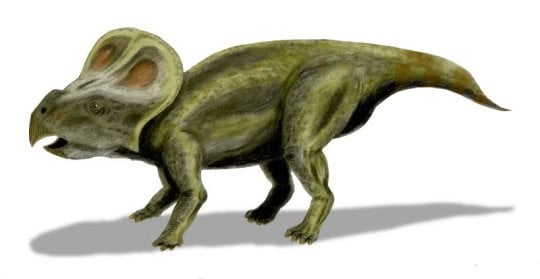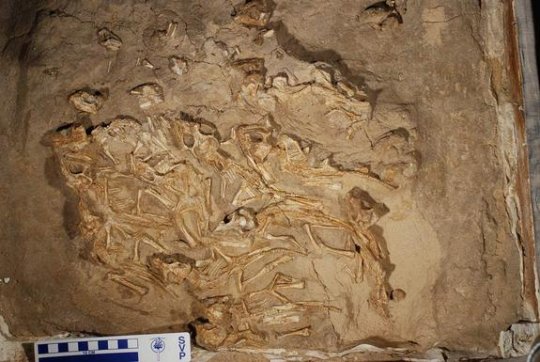
Protoceratops andrewsi was a four-legged, 6-foot-long (1.8-meter-long) herbivorous dinosaur, with a beak-like mouth and a bony frill around the back of its neck, making it look like a small Triceratops without the three horns. (It does have hard ridges where the horns would be.) It has been described as about the size of a large sheep. Now for the first time ever, scientists have discovered a nest containing the fossilized remains of 15 young Protoceratops andrewsi dinosaurs in Mongolia.
This incredible find is already revealing valuable clues about this genus, like the fact that these young Protoceratops remained in the nest for a longer period of time than first thought. This 70-million-year-old nest is in remarkable condition, with at least 10 of the 15 dinosaurs remaining complete and intact.

All are about the same size and at the same stage of development, so it looks like they are all from the same mother at the same time of birth. This find gives the first evidence that the young dinosaurs stayed in the nest through the early stages of life while being cared for. They did not just fend for themselves from the outset. It appears that at the time of death these youngsters were less than a year old. As it turns out, there is a good reason for this extended nest time.
According to David Fastovsky, University of Rhode Island (URI) professor of geosciences, Protoceratops andrewsi lived in a climate resembling the Sahara Desert, and the reason that they spoiled their large number of youngsters with extra care may be because the mortality rate was high and this helped ensure the survival of some.